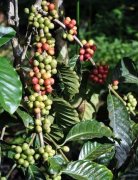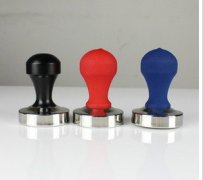Knowledge of coffee cups introduce the material requirements of coffee cups

·Pottery and porcelain
The simplicity of pottery and the roundness of porcelain each tell different coffee comments. Some people like to use thick texture ceramic cup, full of masculine strong deep roast coffee, but most people still commonly use porcelain cup, interpretation of coffee delicate fragrance. Among them, bone china made of high-grade porcelain clay and mixed animal bone powder is light in texture, soft in color, and high in heat preservation, which can best retain the warm memory of coffee.
·Put coffee in a cup at the right temperature
Warm mood, of course, to use warm cups to dress. Warming the cup, although it is only a simple step, is an indispensable key to preserving coffee aroma. Because, just out of the boiling coffee, once poured into the cold cup, the temperature suddenly dropped, the aroma will be greatly reduced. The easiest way to warm a cup at home is to pour it directly into hot water or put it in a dish dryer to warm it up beforehand. If you entertain a table of guests at the same time, you can boil a pot of water and immerse all the cups together. Before tasting coffee, don't forget to warm a cup with just the right heat to completely seal all the flavors of coffee.
·Fine Bone Porcelain Archives
* Composition-25% bone powder mixed with 75% high-grade porcelain clay.
* Features-light texture (weight), strong light transmittance, soft color, high density (fragile, easy to clean), high temperature resistance (good insulation).
* Select the way to distinguish-yellow color under the light, there is a crisp metal sound when tapping.
* Maintenance code-it is best to wash by hand, less users can use the dishwasher. The pH value of the lotion must be between 11-11.5. When washing in the dishwasher, the water temperature should not exceed 70 ° C. When washing with clean water, it should not exceed 80 ° C. It should be noted that the hot cup should not be directly immersed in cold water to avoid rapid temperature changes.
Important Notice :
前街咖啡 FrontStreet Coffee has moved to new addredd:
FrontStreet Coffee Address: 315,Donghua East Road,GuangZhou
Tel:020 38364473
- Prev

The world famous Kopi Luwak Coffee Coffee (Kopi Luwak)
Muscat Coffee (Kopi Luwak), also known as Kopi Luwak, produced in Indonesia, is one of the most expensive coffee in the world. It is extracted from the feces of the civet and processed. The civet eats the ripe coffee fruit and is excreted through the digestive system. Due to the fermentation of the stomach, the coffee produced has a special taste and has become a hot product in the international market. Kopi (Indonesian
- Next

Why use a coffee powder press?
Baristas all know that when using an espresso machine, the hot water brewed has about 9 atmospheric pressure (of course, this is not a fixed value, there are 12 atmospheric pressure or higher), and the pressure is very high, when the water penetrates the coffee cake. the water is inert. What is inertia, that is, water penetrates through the weakest part of the coffee cake, not from the thickest
Related
- Detailed explanation of Jadeite planting Land in Panamanian Jadeite Manor introduction to the grading system of Jadeite competitive bidding, Red bid, Green bid and Rose Summer
- Story of Coffee planting in Brenka region of Costa Rica Stonehenge Manor anaerobic heavy honey treatment of flavor mouth
- What's on the barrel of Blue Mountain Coffee beans?
- Can American coffee also pull flowers? How to use hot American style to pull out a good-looking pattern?
- Can you make a cold extract with coffee beans? What is the right proportion for cold-extracted coffee formula?
- Indonesian PWN Gold Mandrine Coffee Origin Features Flavor How to Chong? Mandolin coffee is American.
- A brief introduction to the flavor characteristics of Brazilian yellow bourbon coffee beans
- What is the effect of different water quality on the flavor of cold-extracted coffee? What kind of water is best for brewing coffee?
- Why do you think of Rose Summer whenever you mention Panamanian coffee?
- Introduction to the characteristics of authentic blue mountain coffee bean producing areas? What is the CIB Coffee Authority in Jamaica?

